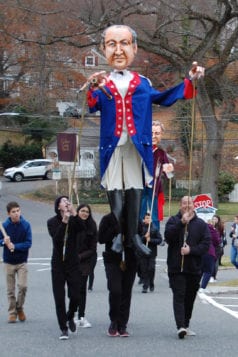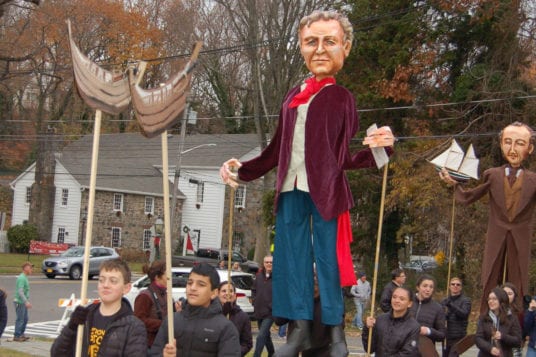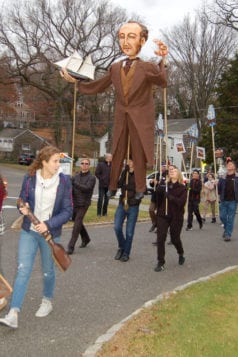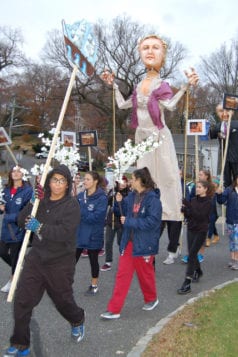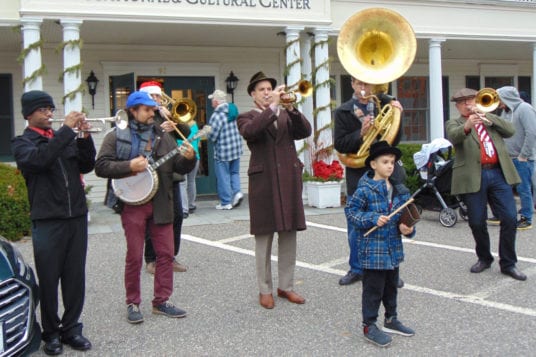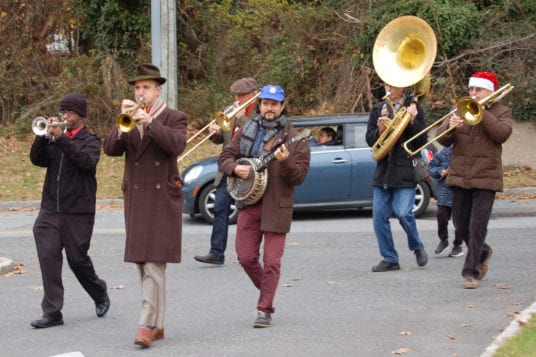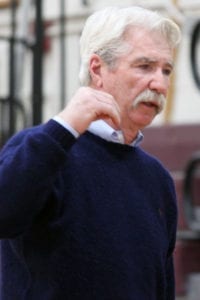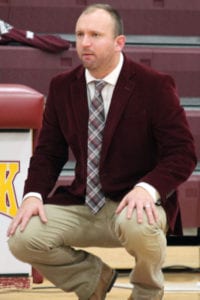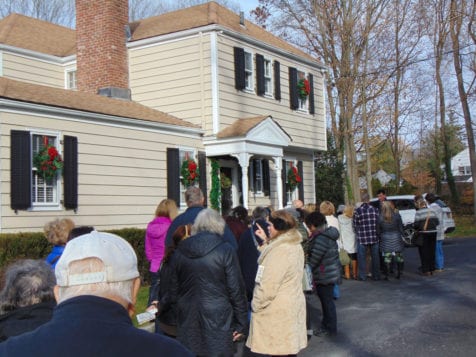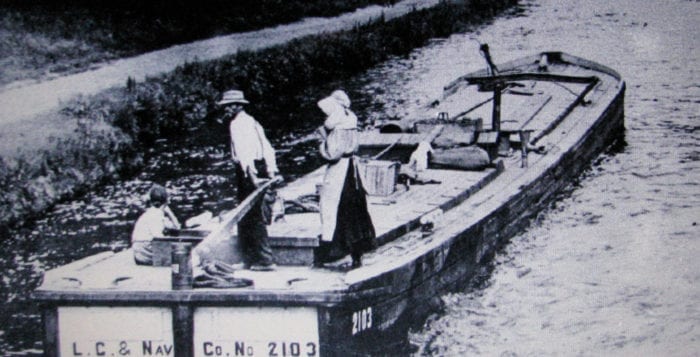Interior designers, garden clubs deck the elegant halls
The Suffolk County Vanderbilt Museum’s holiday centerpiece is the mansion of William and Rosamond Vanderbilt, decorated each year by local designers and garden clubs. Their creative touch brings additional charm and magic to the spectacular, 24-room, Spanish-Revival house, which is listed on the National Register of Historic Places. Visitors can see the captivating results from now through January. The decorators create magic in the rooms with lighted trees, boughs, ornaments, wreaths, ribbons, garlands and elegantly wrapped faux gifts.
Decorating the mansion this year were the Asharoken, Dix Hills, Centerport, Honey Hills, Nathan Hale and Three Village (Old Field, Setauket and Stony Brook) garden clubs; Harbor Homestead & Co. Design of Centerport; and gardeners from the Cornell Cooperative Extension of Suffolk County.
Stephanie Gress, the museum’s director of curatorial affairs, said “Most of these garden clubs and designers have been decorating the mansion for more than 20 seasons. “We look forward to seeing them each year, and to how they use their creative skills to bring elegant holiday charm to the house.” Gress and the curatorial staff decorated the Windsor Guest Room, Breakfast Hallway, Lancaster Room and Northport Porch.
Christine Lagana and a group of friends from the Dix Hills Garden Club decorated the large tree in the mansion library and placed gifts beneath it. They also added garland and ornaments as well as white poinsettias and red ribbons to the mantelpiece over the large fireplace and artful groups of large, mirrored ornaments on side tables.
Mary Schlotter and her daughter, Krishtia McCord — who operate the Centerport design firm Harbor Homestead & Co. — decorated Rosamond Vanderbilt’s mirrored dressing room and the arcade that connects the nursery wing with the front entrance of the mansion. They decorated a live tree in the Sundial Garden off the arcade and hung icicles and silver-sprayed vines, harvested locally, from the arcade ceiling beams.
For Mrs. Vanderbilt’s dressing room, using a dress-form mannequin, they created a skirt with green boughs. “Our friend, dress designer Lorri Kessler-Toth of Couture Creations, created a fitted turquoise-blue velvet cover for the dress-form torso,” Schlotter said. “We added a necklace of chandelier crystals and a pendant and embellished the skirt with teal ornaments, champagne ribbon and filigreed poinsettia leaves. This is a dressing room, so we created a Christmas dress.”
Schlotter and McCord added chandelier crystals and champagne poinsettia leaves to the bough that decorates the mantelpiece on the marble fireplace. The crystals on the mantel complement those that hang from the sconces in the mirrored, hexagonal dressing room.
The Asharoken Garden Club, returning after many years, decorated Mrs. Vanderbilt’s bedroom with colors that reflect her love of pearls, Gress said, including copper, cream and gold. The Centerport club embellished the guest room of Sonja Henie (three-time Olympic skating champion, movie star, and family friend) and William Vanderbilt’s bedroom. The wreaths, garlands and large golden ornaments in Mr. Vanderbilt’s room were highlighted by pots of elegant red amaryllis, a stunning seasonal flower. They also placed garland and tall, thin trees, hung with ornaments, on the mantelpiece.
The Nathan Hale club, which decorated the Organ Room, clipped old-fashioned candles with brass holders and wax-catchers on the branches of the tree. Members added garland and cherubs to the carved mantelpiece and placed arrangements of gold-sprayed pine cones and scallop and whelk shells on tables.
In the Portuguese Sitting Room, in the original wing of the mansion, the Honey Hill club placed Tiffany packages beneath the tree and added small holiday touches around the room. The Cornell Cooperative Extension gardeners worked outside, adding flourishes to the mansion windows with live wreaths, trimmed with flowers, fruits and ribbons. “These generous volunteers use their time and talent to create an atmosphere of charming holiday grandeur and sophisticated living,” said Lance Reinheimer, executive director of the Vanderbilt Museum. “We’re grateful to them for bringing magic to this historic house.”
Visiting the Vanderbilt Museum:
Now that the Vanderbilt mansion and its halls are decked elegantly for the season, the public is invited to see the home at its most magical time. Guided tours of the decorated Vanderbilt mansion continue each Tuesday, Saturday and Sunday at 12:30, 1, 2, 3 and 4 p.m. — and on Tuesday, Dec. 26, through Saturday, Dec. 30. (Visitors pay the general admission fee plus $6 per person for a tour.)
Special Twilight Tours will be given for two days only: Wednesday and Thursday, Dec. 27 and 28, from 6 to 8 p.m. Admission is $10 for adults, $9 for students and seniors (62 and older) and $5 for children 12 and under.
The Vanderbilt Museum and Reichert Planetarium will be open from noon to 4 p.m. on Dec. 26 to 30 and will be closed on Christmas Eve, Christmas Day, New Year’s Eve and New Year’s Day.
The Suffolk County Vanderbilt Museum is located at 180 Little Neck Road in Centerport. For more information, call 631-854-5579 or visit www.vanderbiltmuseum.org.










